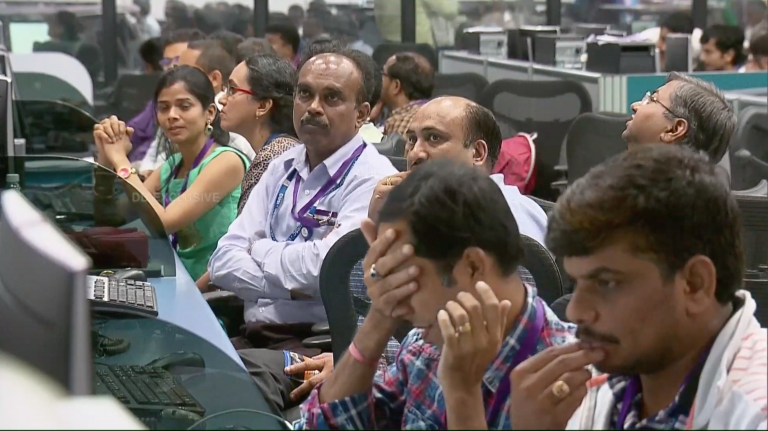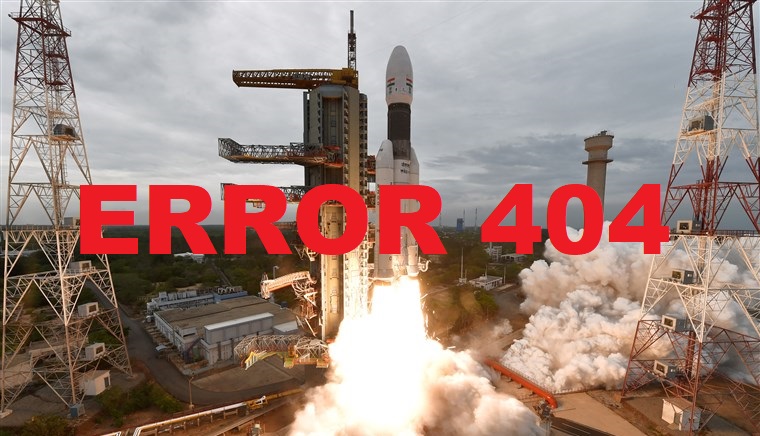India’s historical attempt to land a rover on the moon may have ended in disastrous moments before landing.
The space agency in India, ISRO – “a nation of well over one billion people” was all set for landing. But ISRO lost communication with its Chandrayaan-2 lunar mission on Saturday in a setback to the nation’s ambitious mission to land an unmanned rover on the moon.
“Vikram lander descent was as planned and normal performance was observed till the altitude of 2.1 km. Subsequently, the communication from the lander to ground station was lost. The data is being analyzed,” said K. Sivan, chairman of the Indian Space Research Organisation, the country’s equivalent of NASA.
Astronomer Cees Bassa, working with the low-frequency radio telescope tweeted, “It looks like the @isro #Chandrayaan2 Vikram lander has crashed. After the rough braking phase the Doppler curve from @radiotelescoop shows some wiggles, and then, at 20:20:01UTC the signals disappeared”
It looks like the @isro #Chandrayaan2 Vikram lander has crashed. After the rough braking phase the Doppler curve from @radiotelescoop shows some wiggles, and then, at 20:20:01UTC the signals disappeared… pic.twitter.com/YQzriRslQ3
— Cees Bassa (@cgbassa) September 6, 2019
A ‘Mission’ control room in the city of Bengaluru packed with scientists want through obvious variations as feedbacks from the lander blurred. A poor Indian crowd had celebrated every single and small step, with immense excitement during the controlled descent (or most probably a controlled crash) and at 1:55 a.m. local time on Saturday (4:25 p.m. ET Friday), the moment the landing was expected to occur, silence took over the entire gathering.

“In life, there are ups and downs. The country is proud of you. And all your hard work has taught us something … Hope for the best, you have served the country well and served science and humanity well,” said Prime Minister Narendra Modi after the announcement.
Later, Modi tweeted: “We remain hopeful and will continue working hard on our space program.” He was scheduled to address the nation later Saturday, regarding this ill-fated moon mission.
#ISRO
Honorable Prime Minister Shri. Narendra Modi will address the nation from ISRO Control Centre today (September 07, 2019) at 0800 hrs IST.@PMOIndia @narendramodi— ISRO (@isro) September 6, 2019
Modi was in the control room when the lander was supposed to make successful decent.
Before communication was lost, the lander was attempting to make a safe landing in the high latitude region near the south pole between two craters.
“This particular south pole is in a shadow region. Because of these special characteristics, it is believed that new sides will be hidden. It is a place that nobody has explored,” said K. Sivan, chairman of ISRO during an interview last week.
India is holding a larger share of the more than $300 billion global space industry and Prime Minister Narendra Modi claimed the project to be a global low-cost provider of services in space.


























Leave a Reply